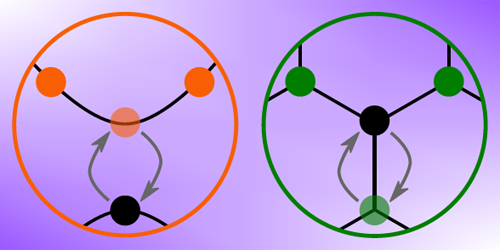Explaining Superconductivity in 2D Materials
Many two-dimensional (2D) materials—ultrathin films or atom-thick sheets—exhibit superconducting critical temperatures and current densities that can vastly exceed those of conventional superconductors. To date, however, there isn’t a theory that successfully explains these materials’ unconventional superconductivity and that could guide the search for better 2D superconductors. Now, Valentin Crépel of the Massachusetts Institute of Technology (MIT) and co-workers have shown that a novel model, based on a strong electron-coupling mechanism, holds promise for filling this gap [1]. The model may also help in understanding the superconductivity of twisted bilayer graphene, which remains unexplained despite feverish research efforts since its discovery in 2018.
The researchers found the crucial ingredient for their model in “what seemed to be the worst place to look,” says team leader Liang Fu, also at MIT—namely, in filled electronic bands, whose electrons are bound to the lattice atoms and thus do not directly contribute to the material’s conductivity. Conducting electrons, however, are affected by all the possible quantum-mechanical paths, or “virtual transitions,” that involve electrons switching between filled bands and conduction bands. According to the team’s calculations, these fleeting transitions create a polarization in the material that screens electrons from the repulsion of other electrons, producing a net attractive interaction among electrons. This attraction can serve as a “superconducting glue,” much like the electron-phonon coupling that binds Cooper pairs in conventional superconductors.
The researchers’ model predicts critical temperatures that are much closer to the observed ones than those predicted by previous models for these systems. What’s more, they argue that a similar strong coupling should arise from the multiple electronic bands of twisted bilayer graphene, suggesting that similar mechanisms may be at play in that material’s elusive superconductivity.
–Matteo Rini
Matteo Rini is the Editor of Physics Magazine.
References
- V. Crépel et al., “Unconventional superconductivity due to interband polarization,” Phys. Rev. B 105, 094506 (2022).




